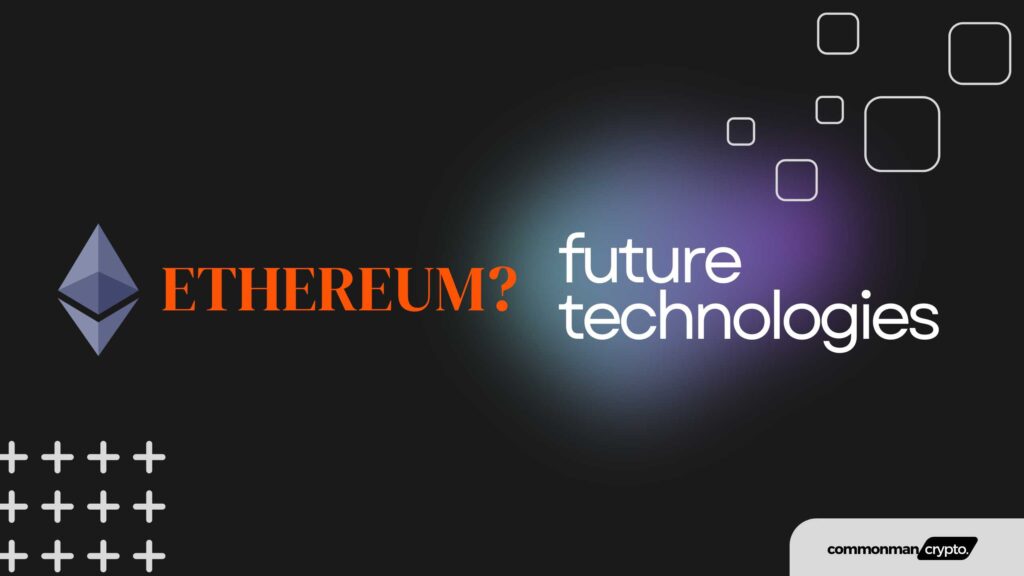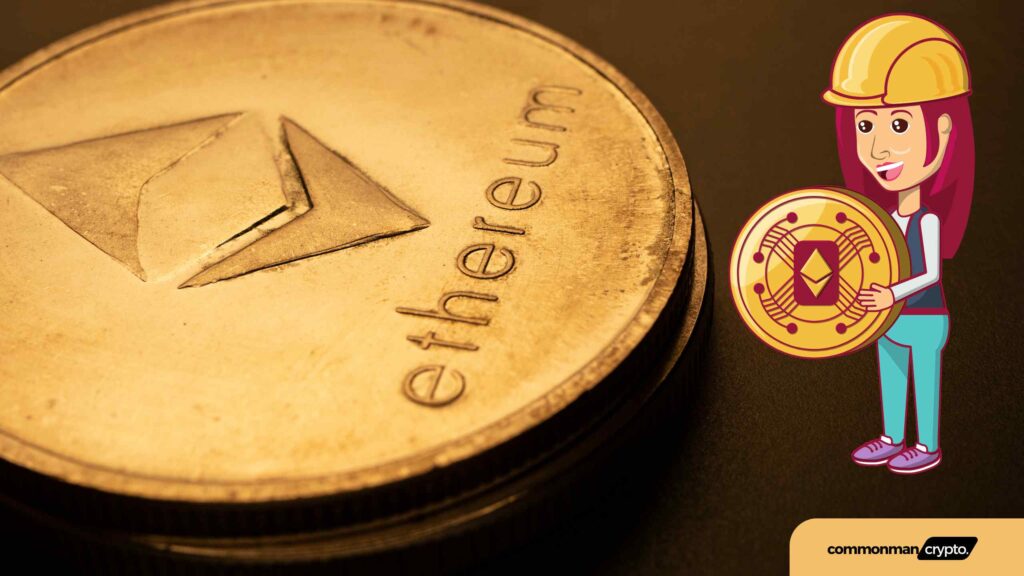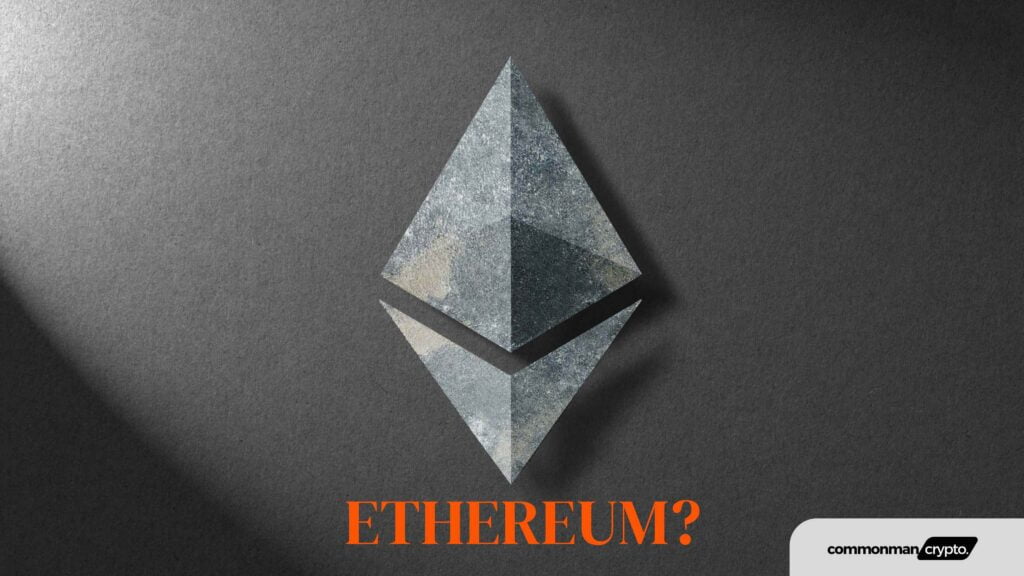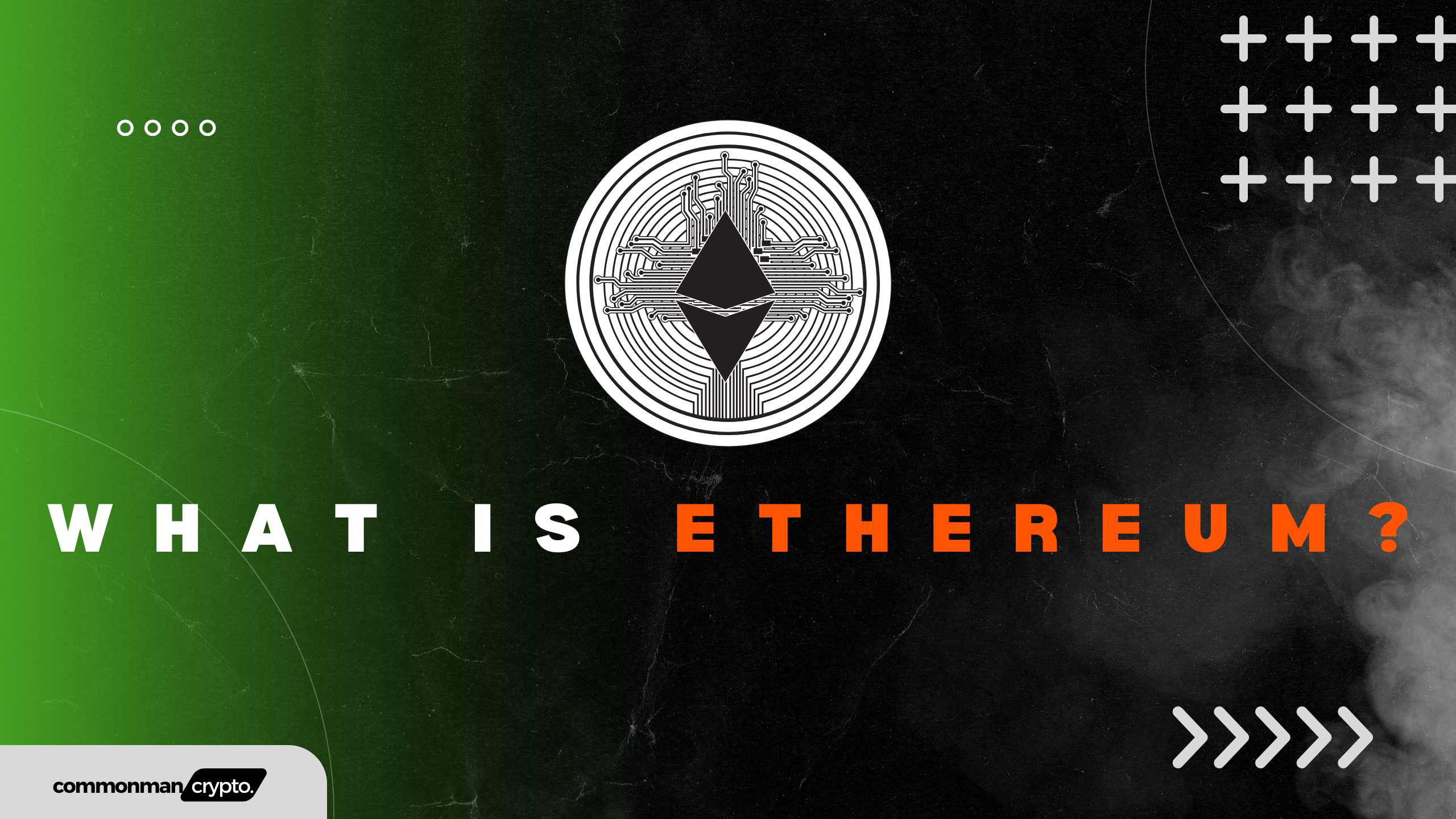Ethereum was launched in 2015 and quickly became the second-biggest cryptocurrency by market cap after Bitcoin. But unlike its counterpart, its creators did not intend for it to function as digital money. Instead, they aimed to build a global and decentralized computing platform with all of the benefits associated with blockchains but with wider applicability across various applications.
Ethereum blockchain already powers everything from financial tools and games to complex databases – and its future potential is only limited by developers’ imaginations. According to the non-profit Ethereum Foundation: “Ethereum can be used to codify, decentralize, secure and trade virtually anything imaginable.”
Ethereum has rapidly become a widely adopted investment vehicle and store of wealth (and can even be used, like Bitcoin, to send or receive value without an intermediary directly).
The Ethereum blockchain provides developers with an enormous selection of applications: games, databases, and complex decentralized financial instruments without banks for support.
Ethereum-based applications are built using “smart contracts.” Like traditional paper contracts, smart contracts set the terms of an arrangement between parties but, unlike their older counterparts, automatically execute when those terms have been fulfilled without needing an intermediary to manage them.
Ethereum, like Bitcoin, is an open-source project not controlled or owned by any individual or group. Anyone with internet access can run an Ethereum node or interact with its network.
Just as Bitcoin’s decentralized blockchain enables any two strangers to exchange currency directly without banks as intermediaries, Ethereum’s smart contracts enable developers to build applications that should run as promised without downtime, censorship, or third-party interference.
Popular innovations based on Ethereum include stablecoins (such as USDC, which pegs its value to that of the dollar via smart contract), decentralized finance apps (collectively known as DeFi), and other decentralized applications (apps).
Ethereum is the second-biggest cryptocurrency by market cap after Bitcoin, and it is an impressive decentralized computing platform capable of running various apps -- such as DeFi!

What Is Ethereum?
Ethereum is a Blockchain network with its own built-in Turing-complete programming language for building decentralized applications known as Dapps (decentralized applications). Fuelled by an in-house cryptocurrency called “ether,” the Ethereum network powers many Dapps across its ecosystem.
Ethereum network is well known for facilitating the implementation of smart contracts. Smart contracts are virtual bank lockers holding certain values, with conditions that must first be fulfilled for unlocking.
Ethereum stands apart from Bitcoin as it can be applied across various sectors and industries. As such, it has often been called “Blockchain 2.0,” since it demonstrated how its potential goes far beyond financial applications.
Ethereum utilizes Proof of Stakes(PoS), an energy-efficient alternative to Proof of Work(PoW). PoS depends on how much stake each node holds for consensus to occur.
History of Ethereum
2013: Vitalik Buterin first described Ethereum in his white paper, which was released in 2013, outlining its purpose and intended development of decentralized applications.
2014: Gavin Wood defined EVM in an official paper, and development began formally for this software platform.
2015: Ethereum marked its official launch by creating its Genesis Block in 2015. 2018: Following Bitcoin’s market capitalization, Ethereum rose to second place compared to the previous year.
2021: London was a major network upgrade that included Ethereum improvement proposal 1559 and introduced a mechanism for decreasing transaction fee volatility.
2022: Ethereum has adopted the Proof-of-State consensus mechanism, Ethereum Merge, to reduce energy usage by over 99.95%.
Features of Ethereum
Smart Contracts: Ethereum provides the capability for creating and deploying smart contracts. Most contracts are created using solidity – a relatively straightforward object-oriented programming language.
Ethereum Virtual Machine (EVM): A runtime environment for compiling and deploying smart contracts based on Ethereum technology. Ether: Ether is the cryptocurrency that powers Ethereum’s network; its transaction fees must be paid using Ether only.
Decentralized Applications (Daaps): Dapps runs its backend code on a decentralized peer-to-peer network, with any language providing its frontend and user interface for making calls and querying data from its backend. Ethereum gives them the flexibility they require regarding operation; their function remains constant regardless of its environment.
Decentralized Autonomous Organizations (DAOs): DAO is a decentralized organization that uses democratic processes in a non-authoritarian fashion, using smart contracts or decentralized voting systems within its organization for decision-making purposes or voting processes.
Ethereum Account Types
Ethereum offers two account types – externally owned accounts (EOA) and contract accounts – which are detailed below.
Externally Owned Account (EOA): These externally owned accounts (EOAs) are managed with private keys, with each EOA possessing its own public/private key pair for signing transactions and sending messages through transactions created and signed by users.
Contract Account: Contract accounts are controlled by contract codes that are stored with them. Each account has an associated ether balance, and when any EOA transaction or message from another contract comes through, it is activated automatically, enabling read/write messages to be sent into local storage, sending messages out, or creating contracts.
Key Questions:
What’s the difference between Ethereum, Ether, and ETH?
Ethereum is both the name and a name for its network, while Ether (pronounced Ethereum) is its native cryptocurrency token used in everyday usage, most commonly referred to as “ETH.” Like Bitcoin, ETH works much like its rival as a means for sending, receiving, and storing value but additionally plays an integral part in keeping everything running on Ethereum – users pay fees in Ether to execute smart contracts; you could think of Ether like fuel that keeps things humming along (these fees are known as “gas”).
If Bitcoin can be considered “digital gold,” Ethereum (ETH) could be seen as “digital oil.”
If Ethereum Is Safe?
Ethereum (ETH) is currently protected by its blockchain using “proof of stake” technology.
Cryptocurrencies owe their safety to two fundamental ideas that underlie them: they’re permissionless systems with open-source software at their core; this has allowed countless computer scientists and cryptographers to conduct rigorous analyses on all aspects of these networks, including security measures.
However, apps running on the Ethereum blockchain can only ever be as secure as their developers have made them. Code may contain bugs that lead to loss of funds; while their source codes are openly visible to everyone (though individual user bases of apps tend to be smaller), fewer eyes will likely be watching each one individually – so before using any decentralized application, it is wise to research its safety first.

How Does Ethereum Work?
You might have heard that the Bitcoin blockchain functions similarly to a bank ledger or checkbook. It keeps an accurate tally of every transaction made on its network since its inception, with all members working collaboratively to ensure this tally remains accurate and secure. Likewise, Ethereum works similarly – every transaction it makes must be recorded accurately within its blockchain ledger, similar to how banks and checkbooks record all their financial dealings.
The Ethereum blockchain works like a computer: while still documenting and securing transactions, its flexibility makes it much more suitable for developers to build tools like logistics management software or games or DeFi applications that cover lending, borrowing, and trading services.
Ethereum utilizes a ‘virtual machine,’ similar to an enormous global computer with many individual computers running the Ethereum software, to achieve all this. Maintaining all those computers requires investments in hardware and electricity by participants – with Ether (or, more commonly known by its acronym ETH) serving as its currency to cover these expenses.
ETH keeps everything running. You interact with the Ethereum network by paying fees with ETH to execute smart contracts on it – these payments are known as “gas.”
Gas rates depend on how busy a network is. Ethereum 2.0 was released for testing on September 20,22 to enhance efficiency.
What Is Ethereum 2.0?
Ethereum 2.0, or ETH2, is an upgrade designed to expand and secure the Ethereum network while increasing security, speed, and efficiency. It was first implemented in September 2022 by merging both original blockchains with ETH2.
Why does Ethereum 2.0 exist?
Migrating a popular cryptoasset like Ethereum to a different platform may seem daunting, but this step was necessary for its growth and evolution. That is because the Proof of Work method employed by its original blockchain caused bottlenecks, increased fees, and consumed significant resources (particularly electricity).
What Is Proof of Work?
How can cryptocurrency networks ensure no duplicate spending without recourse to central authorities like Visa or Paypal? They employ a consensus mechanism; when Ethereum 1.0 launched, it adopted one pioneered by Bitcoin: Proof of Work.
Proof of Work requires vast processing power from around the world – contributed by virtual “miners,” who compete to solve an intricate math puzzle as quickly as possible.
Winners get to update the blockchain with all verified transactions and are awarded an amount of ETH as compensation.
As traffic on the network has increased, Proof of Work’s limited capabilities have caused unpredictable bottlenecks that spike fees.
What is staking?
Ethereum’s founders recognized Proof of Work’s limitations, so a unique solution was devised for Ethereum 2.0, enabling its network to process thousands of Ethereum transactions per second efficiently.
Ethereum 2.0 employs a consensus mechanism called Proof of Stake, which is faster, less resource-intensive, and theoretically more secure than Proof of Work. Like Proof of Work’s results, network participants are chosen randomly to verify transactions that come through, update the blockchain accordingly, and earn some ETH in return.
Proof of Stake is different because it relies on an active network of participants invested in its success rather than miners racing against each other to solve puzzles.
These stakeholders, known as validators, make up another stake in Ethereum by contributing not processing power but money instead to a “staking pool.”
Staking involves contributing some of your Ethereum to a pool and earning rewards proportionate to its size. If you decide to stake some of your ETH, rewards will be proportional.
The network selects a winner based on how much ETH each validator holds in their pool and for how long, rewarding those with deeper stakes by rewarding those most invested participants.
Once a winner has authenticated a block of transactions, other validators can verify its accuracy by attesting that enough people vouch for it before updating the blockchain.
All validators receive a reward in ETH, distributed according to each validator’s stake in proportion to their performance on the network.
Smart contracts: Computer scientist and lawyer Nick Szabo first proposed smart contracts in the 1990s. Szabo famously likened smart contracts to vending machines: If you put $1 into such a machine and select any cans of soda when your choice sells out, it automatically produces another selection or returns your dollar with change back out again - an example of an automated sale without a human intermediary; smart contracts can provide similar capabilities about any exchange transaction that involves no human intermediaries whatsoever.
How to Buy Ethereum
Newcomers often think the Ethereum network resembles buying Bitcoin: you don’t buy Ethereum itself but rather Ether, which you use on it. Given its immense popularity, buying Ether can be easily achieved: Follow these steps!
- Select a cryptocurrency exchange: Exchanges and trading platforms enable investors to purchase and sell cryptocurrencies, such as Coinbase, Binance, CoinDCX, WazirX, and CoinSwitch Kuber.
- Deposit fiat money: You can deposit fiat currency directly onto your trading platform or link your bank account/debit card for Ether purchases.
- Buy Ether: Once your account is funded, use it to purchase Ether at its current market price and other assets. When the coins arrive in your account, you could hold onto them, sell them, or trade them later – though be mindful that such sales and trades may incur taxes.
- Use a wallet: Storing Ether on your trading platform’s default digital wallet could pose a security risk; someone could easily hack the exchange and access all your coins. An alternative method may be moving them out into another digital or cold wallet disconnected from the internet for increased protection.
Should You Buy Ether?
According to DeWaal, investing in Ethereum may be worthwhile for several reasons. “Firstly, its virtual currency properties make it attractive. Furthermore, when its blockchain migrates to new protocols it could become even more desirable and thirdly as more people utilize distributed apps using it could increase demand.
Instead of purchasing Ether directly, consider investing in companies building applications on the Ethereum network. Professional investment funds like the Bitwise Ethereum Fund or Grayscale Ethereum Trust could also provide helpful support for managing your investments.
Before investing in Ethereum or other cryptocurrencies, consult a financial advisor about potential risks. Due to the high risk and volatility associated with this market, make sure it’s money you can afford to lose, even if you believe in Ethereum’s potential.

Ethereum Vs. Bitcoin
Bitcoin serves primarily as a virtual currency and store of value; Ether works similarly but with additional functions, allowing developers to build applications, run smart contracts, and conduct other transactions across its decentralized Ethereum network. Bitcoin does not provide these functions.
Ethereum offers more rapid transaction processing.
Gary DeWaal, chair of Katten’s financial markets and regulation group. According to him, Bitcoin network transactions are validated every ten minutes, while Ethereum transactions could potentially speed up even further in future developments.
Finally, Ether tokens do not have an upper limit, while Bitcoin will release no more than 21 million coins, of which 19 million coins have already been issued and circulated.
Real-World Applications of Ethereum
Voting: Ethereum has quickly become the go-to technology for voting systems. Poll results can be publicly accessible, providing a transparent, fair system while eliminating malpractice in voting practices.
Agreements: Ethereum smart contracts allow agreements and contracts to be executed without alteration. Ethereum can be used to create smart contracts and digitally record related transactions.
Banking Systems: Due to the decentralized nature of Ethereum blockchain technology, hackers find it more challenging than ever to gain unauthorized entry to its network and make payments on it secure; banks, therefore, use Ethereum as a channel for payments.
Shipping: Ethereum provides a tracking framework that assists with cargo tracking, helping prevent it from getting misplaced or going astray.
Crowdfunding: Integrating Ethereum smart contracts into blockchain-based crowdfunding platforms increases trust and information symmetry while offering startups numerous possibilities to create their digital currency by raising funds for the creation process.
Domain Names on Ethereum: With Ethereum Name Service, crypto users can purchase and manage their domain names on Ethereum, making decentralized transactions simpler without forcing users to remember long machine-readable addresses.
Benefits of Ethereum
Since Ethereum is decentralized, there is no downtime. Even if one node goes offline, other computing nodes remain operational and available for processing transactions.
Privacy: When exchanging cryptocurrency on our network, users don’t need to enter their credentials, enabling them to remain anonymous and unnoticed by others.
Security: Ethereum was designed to be secure; hackers must gain control of most network nodes to exploit the network and its vulnerabilities.
Less Ambiguity: Ethereum smart contracts provide clearer agreements than their traditional counterparts, which require follow-through and interpretation.
Rapid Deployment: With Ethereum decentralized networks, enterprises can quickly deploy and manage private blockchain networks instead of developing them from scratch.
Network Size: The Ethereum network can accommodate hundreds of nodes and millions of users simultaneously.
Data Coordination: Ethereum’s decentralized architecture provides better information distribution among network participants without needing a central entity to oversee transactions or manage systems.
Disadvantages of Ethereum
Complicated Programming Language: Learning solidity to program smart contracts on Ethereum can be daunting, and one of the main issues is finding beginner-friendly classes.
Volatile cryptocurrency: Ethereum investments can be risky due to its highly fluctuating price, potentially yielding significant profits and losses.
Low Transaction Rate: Bitcoin has an average transaction rate of 7 TPS, while Ethereum can achieve 15 TPS, almost double what Bitcoin does but still not enough for enough transactions per second (TPS).
Frequently Asked Questions (FAQs)
What is Ethereum, in simple words?
Ethereum is a decentralized blockchain platform with a peer-to-peer network to execute and verify application code known as smart contracts, which enable participants to transact without needing an authoritative central authority for verification purposes.
Is Ethereum better than Bitcoin?
Ethereum was developed explicitly for payments on the Ethereum network, making it more suitable than Bitcoin for carrying out transactions that depend on an Ethereum smart contract, such as funding loans that will automatically repay themselves on specific dates.
How does Ethereum make you money?
Validator – Operating an Ethereum node as a validator allows you to secure 32 ETH as collateral and earn rewards by verifying transactions across the blockchain network. Reward levels depend on how much ETH is being transacted across it.
Is ETH a good investment?
As Ethereum continues to gain in popularity, the long-term bull case becomes more compelling; however, this doesn’t guarantee its position as the leading dApp blockchain indefinitely; nonetheless, up until this point, Ethereum has proven an excellent long-term investment opportunity.
Who owns Ethereum?
Ethereum is an open-source blockchain platform created by hundreds of thousands of developers from all around the globe. Being decentralized, no single entity owns or controls it.
What is the difference between Ethereum and crypto?
A cryptocurrency’s supply is the total number of coins created since their inception that have yet to exist. Bitcoin has an uncapped supply of 21 million coins, while Ethereum doesn’t set any maximum supply cap. In theory, any number of Ether coins could potentially be produced.
Conclusion
Ethereum is a decentralized blockchain and development platform that allows developers to create applications and smart contracts on its network. Transactions using its native cryptocurrency, ether (ETH), occur, while network participants are incentivized through proof-of-stake validation.
Future roles for cryptocurrency remain unclear, yet Ethereum appears poised to play an essential part in personal and corporate finance and other aspects of modern life.









